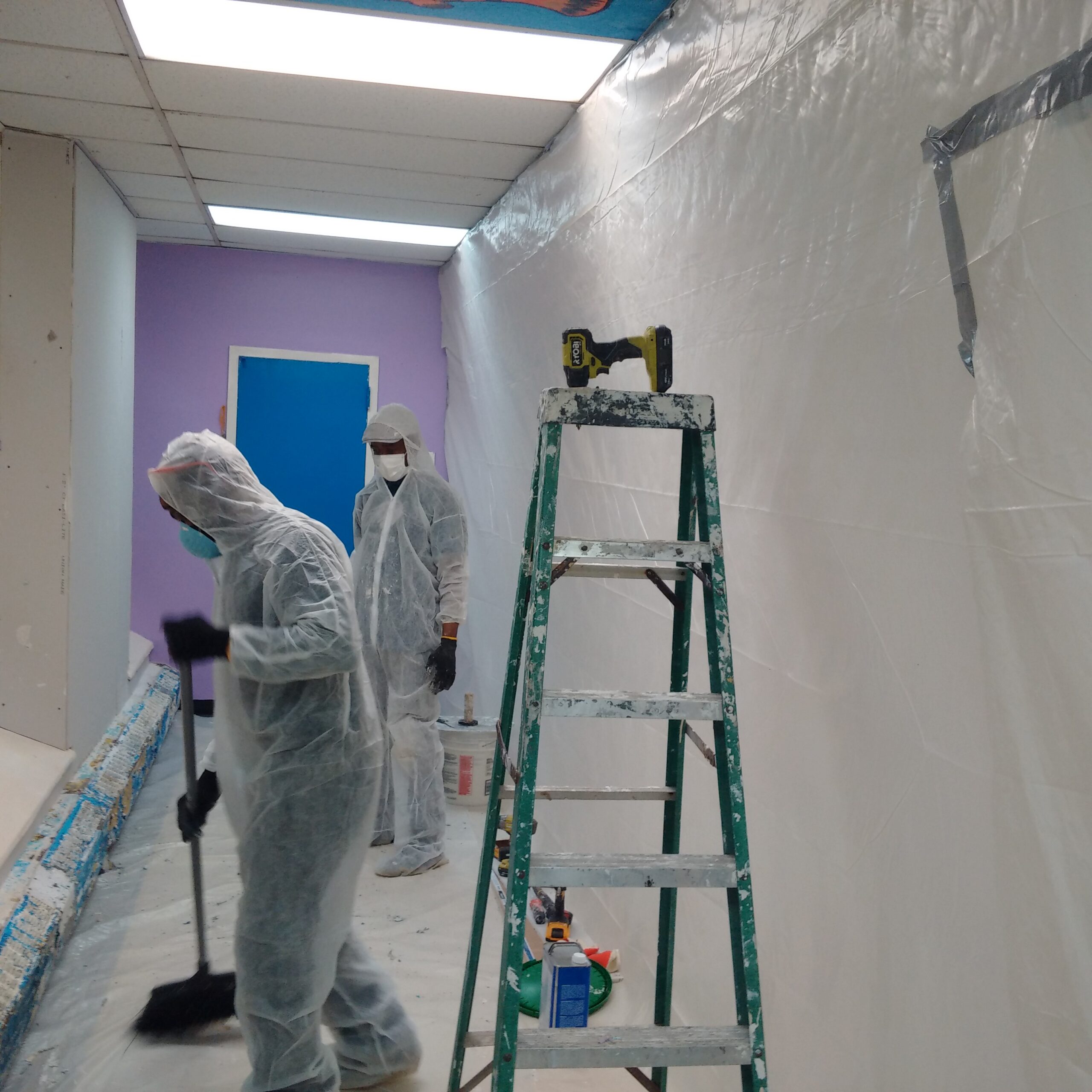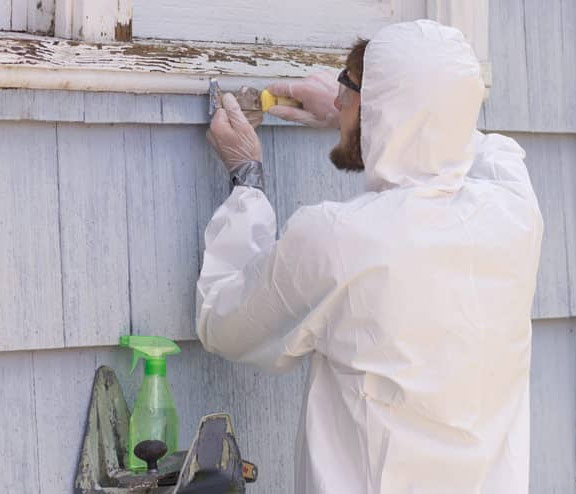Necessary Devices and Strategies for Efficient Lead Infraction Cleanup
Attending to lead violations efficiently demands an extensive approach that mixes the right tools with critical techniques. The initial step includes equipping workers with Personal Protective Devices (PPE) to guard their health. Simultaneously, making use of specialized clean-up tools, such as HEPA vacuum cleaners and lead-specific cleaning agents, is critical for extensive pollutant removal. Reliable control techniques, including plastic sheet and adverse atmospheric pressure systems, are vital to protect against the spread of dangerous materials. Secure disposal techniques and stringent adherence to regulatory guidelines make sure accountable handling of poisonous waste. Yet what are the nuanced strategies that truly make a distinction?
Individual Protective Tools
Individual safety equipment (PPE) is a crucial part in the reliable management of lead contamination cleaning. PPE acts as an important barrier, protecting workers from the hazardous results of lead direct exposure, which can result in severe health and wellness consequences. The vital PPE for lead clean-up includes respirators, safety garments, handwear covers, and eye defense. Each kind of devices is particularly developed to minimize different risks associated with lead bits and dust.
Respirators, particularly those equipped with HEPA filters, are indispensable for filtering airborne lead fragments, protecting against inhalation. Safety clothing, including coveralls and disposable matches, stops lead dust from sticking to employees' garments, decreasing the risk of additional contamination.
Additionally, rigorous training on the appropriate usage and maintenance of PPE is important. Workers should be informed on donning and doffing treatments to stay clear of contamination. Normal examinations and substitutes of PPE elements are essential to keep their safety capabilities, ensuring a safe and certified cleanup procedure.
Specialized Clean-up Tools

Another crucial device is the wet/dry vacuum, which can efficiently tidy up both dust and fluid pollutants. These vacuums typically feature HEPA filters to offer an additional layer of safety. Damp cleans or tack towels are likewise important for surface cleaning; they are specifically designed to record and hold lead fragments, lowering the threat of spreading out contamination.
For more persistent deposits, specialized lead-removal cleaner are called for. These agents are formulated to break down lead bits, making them simpler to eliminate. Scrub brushes with strong bristles can aid in this procedure, especially on rough surfaces where lead dust has a tendency to stick much more strongly.
In addition, encapsulants are made use of to seal lead-contaminated surface areas, avoiding the release of lead dust. These specialized paints and finishes are developed to adhere to various substrates, providing a long-lasting service for lead control.
Reliable Control Approaches
Effective control techniques are vital in mitigating the spread of lead contamination during cleanup activities. Applying durable containment strategies guarantees that lead fragments do not migrate to unaffected areas, thereby securing both employees and the atmosphere. One key technique is making use of plastic bed linen to seal off infected zones. Heavy-duty polyethylene barriers can be mounted from floor to ceiling to produce a controlled workspace, substantially reducing the threat of air-borne lead dust dispersal.

To boost containment, encapsulants can be related to surfaces that are not being removed or disrupted. These specialized coverings bind lead dirt, reducing its accessibility for resuspension. Furthermore, all personnel should use proper Personal Protective Devices (PPE), consisting of respirators and non reusable suits, to stop contamination spread.
Safe Disposal Practices
Making certain secure disposal practices is a crucial part in the monitoring of lead contamination cleaning. Appropriate disposal mitigates the risk of lead coming back the environment and threatening public wellness (DOH & HPD Lead Violation Removal NYC).
Carrying lead waste calls for this adherence to stringent standards. Using licensed dangerous waste service providers guarantees that the materials are handled properly. Documentation, including shows up detailing the kind and amount of waste, must come with shipments to track the waste from the website of origin to its final disposal location.
Designated hazardous waste disposal facilities are equipped to manage lead-contaminated products securely. These centers typically utilize advanced approaches such as stabilization, solidification, or chemical therapy to reduce the effects of the lead before disposal. Landfilling in specialized, lined locations that prevent leachate from contaminating groundwater is an usual technique for final disposal.
Regular training for workers included in lead garbage disposal is critical to maintain safety and security requirements and stop accidental direct exposure. By sticking to these practices, organizations can significantly lower the environmental and wellness impacts connected with lead contamination.
Regulatory Conformity Tips

Sticking to regulatory conformity is critical in the successful execution of lead contamination clean-up. Understanding and following government, state, and neighborhood guidelines ensures click now not just the security and health and wellness of people yet also the legal and economic health of the cleaning company. The Epa (EPA) sets strict criteria, such as the Lead Remodelling, Repair Work, and Paint (RRP) Guideline, which mandates proper accreditation and training for service providers taking care of lead-based activities.
Compliance starts with an extensive evaluation of suitable laws and regulations. Organizations needs to stay updated on any kind of legislative changes, which can review be facilitated via regular training sessions and registering for market updates. Documents is an additional vital conformity aspect; keeping detailed records of all tasks, consisting of examination records, staff member training logs, and disposal materializes, is vital.
Additionally, engaging with licensed lead inspectors or run the risk of assessors makes sure that lead hazards are correctly determined and mitigated. Companies have to enforce the use of Individual Safety Equipment (PPE) and guarantee that security procedures are purely complied with. Clear communication with stakeholders, including workers, customers, and regulative bodies, will cultivate a society of compliance and responsibility, eventually adding to a safer and extra effective lead cleanup procedure.
Verdict
Reliable lead infraction cleanup necessitates the assimilation of specialized tools and strategic methodologies to guarantee safety and effectiveness. Individual protective equipment (PPE) safeguards employees from direct exposure, while risk-free disposal practices and stringent adherence to regulatory compliance are crucial for properly handling harmful waste.